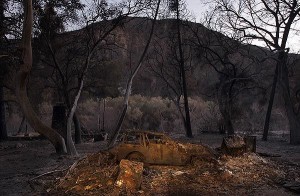Urgent! Mountain Bikers – We need your help!
Support access for bicycles in the newly acquired Upper Filiorum Reserve. Don’t let us get shut out! The workshop is an informal way to express your views in a small group. This is not a council meeting.
Attend the Wednesday Sept 8th workshop at Fred Hesse Community Park (map). Input from the workshop will be used to develop a plan that will determine what trails will be kept and who will be allowed to use them. The workshop starts at 6:30 PM. Spread the word. See points to make and trail list below. Please let us know you will attend – Email info@mtbpv.org
Information available on line – Filiorum workshop.
We believe that these trails will provide an excellent multi-user experience for all trail users, including mountain bikers, who have only a few options left in Portuguese Bend.
- It provides variety and loops.
- Trails provide low use density alternative.
- Use density will likely remain low because of steepness of entry trails.
- We need access from Portuguese Bend to Three Sisters.
- We could mention how few trails are available for bike in PB. Only 5 trails and 2 fire roads, 7 out of 22. That’s less that a third.
- Access should not be denied unless there is clear and measurable cause.
- CORBA will offer to assist rangers educate cyclists.
- Cyclists can provide volunteers to help repair and maintain trails where bikes are allowed.
However if someone at the table brings up something negative we should be ready to provide the facts:
- User conflict, based on a June 30, 2007 PVPLC user survey, is low:
“Overall, there was very little conflict reported between user groups. 95% of the respondents answered that they had experienced no conflicts that day, and 87% had not experienced any past conflicts. Considering the large number of visitors using the Preserve, these numbers express an overall tolerance and peaceful coexistence between the different types of users.” - Equestrians claim entitlement – The survey indicated that only about 1% of users in the reserves are equestrians.
- Trail escalation – Rangers will patrol trails.
- Safety – Although challenging , all trails are usable by cyclists. There have been few, if any, reported accidents. Cyclists walk bikes if needed.
- Segregated trails are inherently unfair.
| Filiorum Trails Include | |||||
| Name | Miles | ||||
| Rattlesnake Kelvin Canyon Possum Gary’s Gulch Cut Across Jack’s Brim Jack’s Hat Jack’s Summit Troop 719 Trail Pony Trail Three Sisters East Fork Three Sisters Upper Connector Three Sisters Lower ConnectorTotal |
0.45 0.49 0.19 0.20 0.57 0.26 0.57 0.22 0.27 0.44 0.20 0.15 0.134.14 |
||||
Rancho Palos Verdes Notice
Help Provide Input on the Trails at Upper Filiorum
The City of Rancho Palos Verdes and the Palos Verdes Peninsula Land Conservancy, with support from the State Coastal Conservancy and contributions from over 700 supporters in the community, added the 191-acre Upper Filiorum property to the Palos Verdes Nature Preserve on December 31, 2009. The acquisition resulted in over 900 contiguous acres of protected open space and a wildlife corridor linking the Three Sisters and the Portuguese Bend Reserves. The City Council adopted Preserve Trails Plan will need to be amended to include the Upper Filiorum trail routes and uses, and your input on the trail planning is requested.
Please join us at the upcoming workshops to provide your input on trail planning for the new portion of the Preserve.
Wednesday, Sept. 8, 2010 – obtain public feedback on potential trail routes and uses
Wednesday, Sept. 29, 2010 – review trails plan based on September 8 the public input
Fred Hesse Community Park
29301 Hawthorne Boulevard, Rancho Palos Verdes
Doors Open 6pm
Meetings 6:30-8:30pm
Hosted by National Park Service, City of Rancho Palos Verdes, and the Palos Verdes Peninsula Land Conservancy
For more information: Ara Mihranian aram@rpv.com 310-544-5228 www.palosverdes.com/rpv;
Lily Verdone lverdone@pvplc.org 310-541-7613 www.pvplc.org





![55156097[1]](http://173.83.181.116/news/wp-content/uploads/2010/07/551560971-300x294.jpg)


